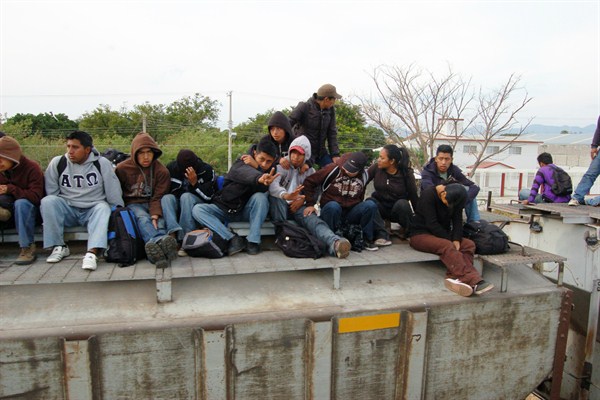MEXICO CITY—Geovanni Martinez Hernandez fled Honduras after being threatened by one of the most vicious gangs in the Americas: Mara Salvatrucha, also known as MS-13. “It was because of my sexual orientation,” said Martinez Hernandez, who is gay. “I just want a place where I can live without being abused, where I can walk without discrimination or fear.” He had hoped to find that in Mexico. But, while traveling alone in late May through Tapachula, a city in far southwestern Mexico bordering Guatemala that is one of the first stops for Central American migrants and asylum-seekers making the trek north to the U.S. border, he was attacked and raped by four men.
In the run-up to the U.S. midterm elections, President Donald Trump whipped up fear about migrant caravans hundreds of miles from the U.S. border, calling Central Americans seeking asylum in the United States an “invasion.” Much of the American media went along, devoting extensive and often breathless coverage to the caravans, even though they are only a small portion of the estimated 400,000 Central Americans who enter Mexico “irregularly” each year. The majority of these migrants and asylum-seekers are still traveling alone or in small groups through Mexico, just as Trump has turned his attention back to the southern border, where American troops have been mobilized and border patrol agents this week fired tear gas on a crowd of migrants, many of them children and women, approaching a border crossing in Tijuana.
While there aren’t specific figures about attacks against LGBT persons, either from the Mexican government or NGOs, it’s estimated that some 70 percent of migrants will be assaulted during their trip through Mexico, and a staggering 80 percent of women will be raped. Amnesty International estimates that 20,000 migrants are kidnapped every year in Mexico, generating $50 million dollars for criminal gangs. The journey is horrific and people undertaking it are under no illusions about the dangers they’ll face. But they take the risk because conditions in their home countries are such that, as one human rights advocate told me in 2015, “They think, ‘If I stay [in my country], I will die, if I go I may die.’ They choose between certain and possible death.”

